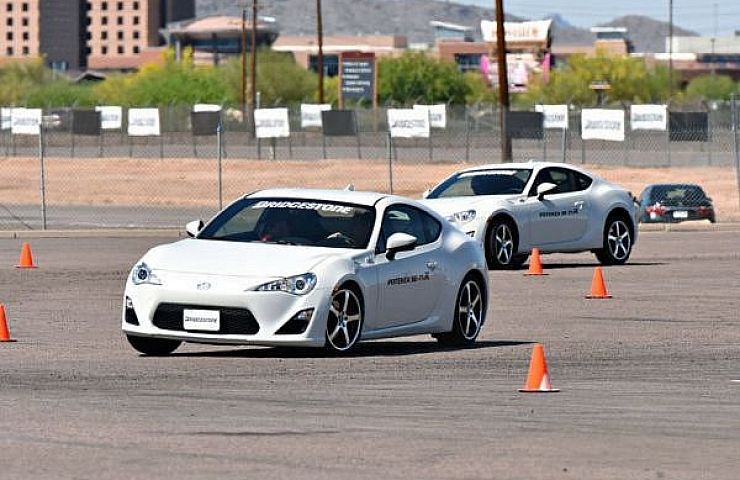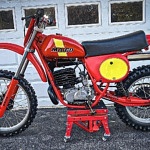Porsche, Audi, and other automakers equip their sport models with summer tires. Granted, these treads don’t have the lifespan of touring tires, but if you want a competitive edge, they’re the way to go.
However, unless you live in a hot climate, summer tires are not suitable year-round. When temperatures get below 40-degrees Fahrenheit, they become too hard and lose traction. Owners whose cars are equipped with summer tires should switch over to winter tires in early November and back to summer tires around Easter.
See expert tips: How to Store and Swap Summer Tires.
Why Bother with Performance Tires?
Upgrading tires is one of the easiest ways to enhance a car’s performance. It doesn’t matter whether your vehicle is a midsize family sedan or sports car. The bottom line: Performance tires improve cornering and braking.
Shop now for performance tiresChris Welty, a tire specialist for Bridgestone, told us:
Some of the differences between summer performance and all-season touring tires are easy to see. Summer performance tires have bigger grooves and larger tread blocks. There is no siping.
Sipes are squeegee-type rubber blades found on all-season tires that help to push water out of the way.

The Potenza RE-71R incorporates deep circumferential grooves and an angled directional pattern to channel water away.
Welty continues:
What you can’t see is the compounding. Look closely at the surface of a road, and you will notice that it’s not completely smooth because paving compounds contain small rocks. Summer tires are compounded to be soft and sticky, so they grip as much of the road surface as possible.
Tire Performance Versus Longevity
For recreational racers and other performance-minded drivers, the decision is usually a compromise between track performance and longevity. To make things easier, tire companies offer several grades so customers can find the combination of wet and dry traction, cornering, and braking they are looking for.
If you are considering a maximum performance tire for the track, remember that some models are intended exclusively for dry surfaces. However, tires on daily drivers also need traction in wet weather.
Bridgestone offers performance tires for this situation. For example, the Potenza RE-71R incorporates deep circumferential grooves and an angled directional pattern to channel water away, so the tires maintain contact with the road in wet weather.
Key Question: How Do You Use the Tires?
The best way to maintain summer and winter tires is to have separate wheels for each set. Ongoing mounting and dismounting breaks down the tire beads.
Drivers living in four-season climates who don’t want to deal with storage have another option. all-season performance tires.
Of course, all-season tires also require a compromise. For example, the surface temperature on a racetrack in mid-summer can reach 200 degrees. All-season tires used under these conditions won’t have the lifespan of dedicated summer tires.
Welty advises:
The most important thing is to be honest with yourself about how you are going to use the tires before making a choice.
“Tires constantly move air when you drive. Moving air makes noise. Tread grooves can direct air to quiet the tire down. Ultra-high performance tires that are more focused on traction have bigger tread blocks and fewer grooves so they will be noisier when they are driven on the street.







